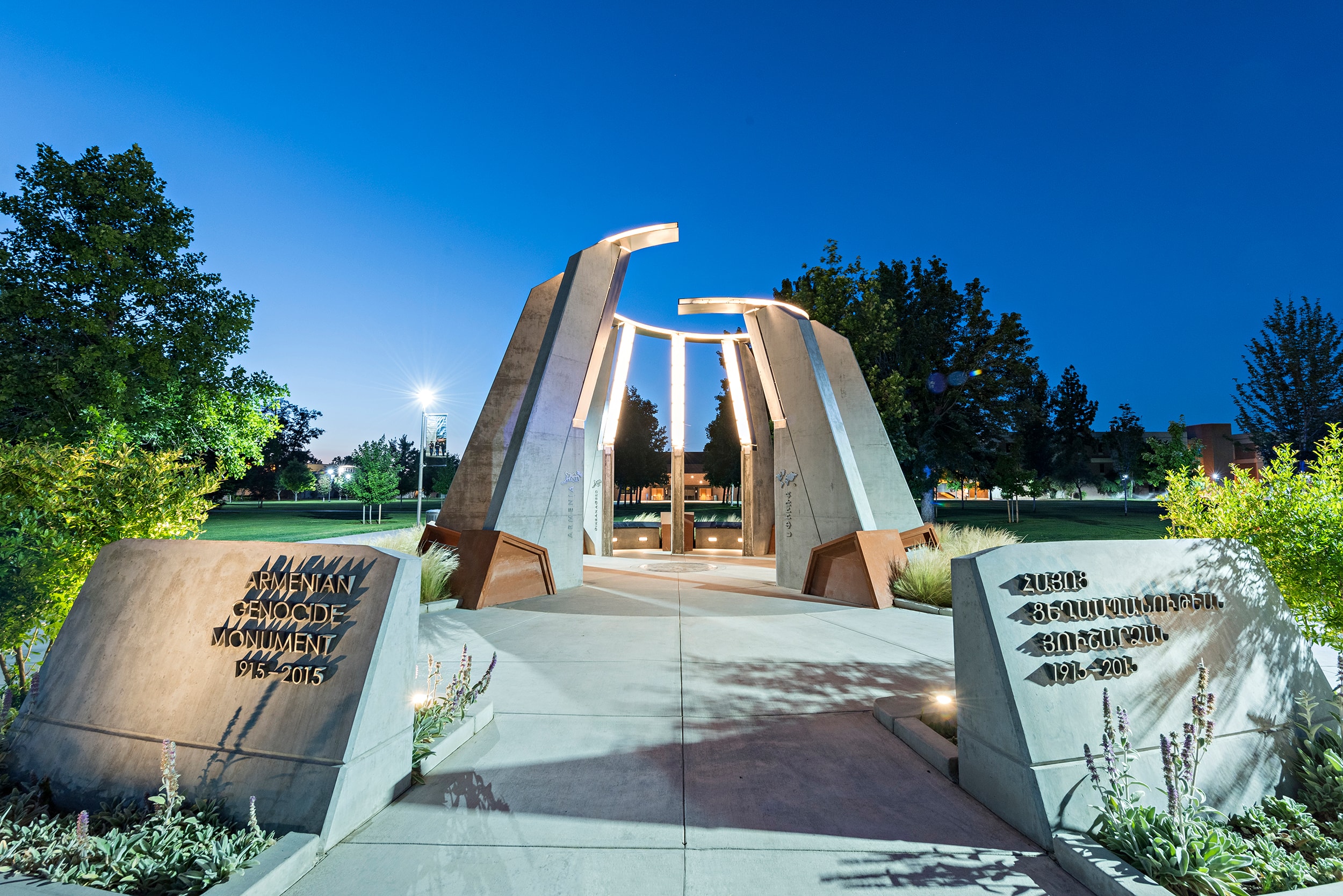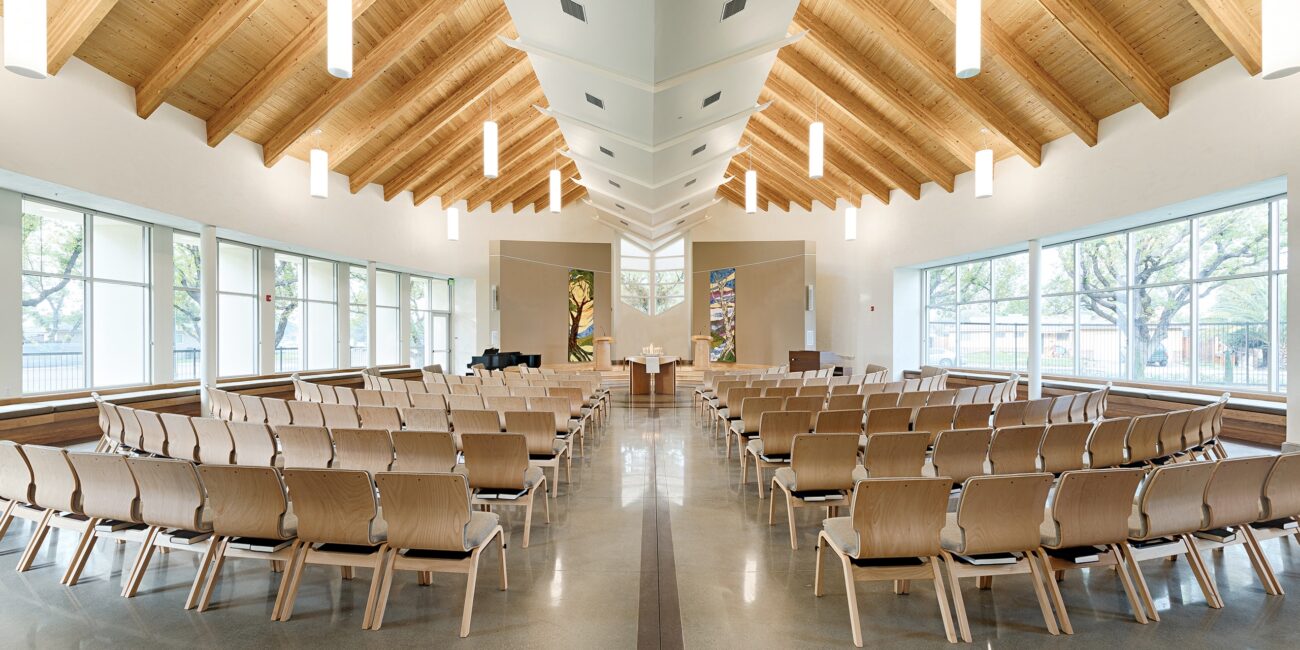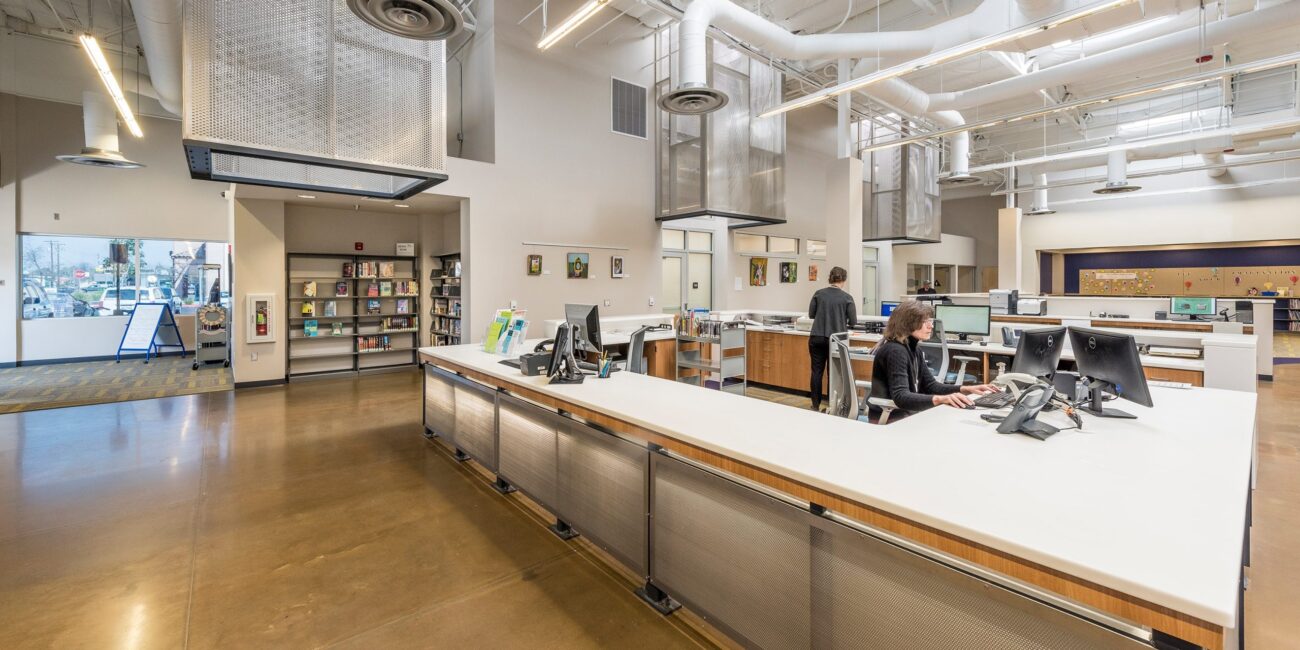Armenian
Genocide Monument
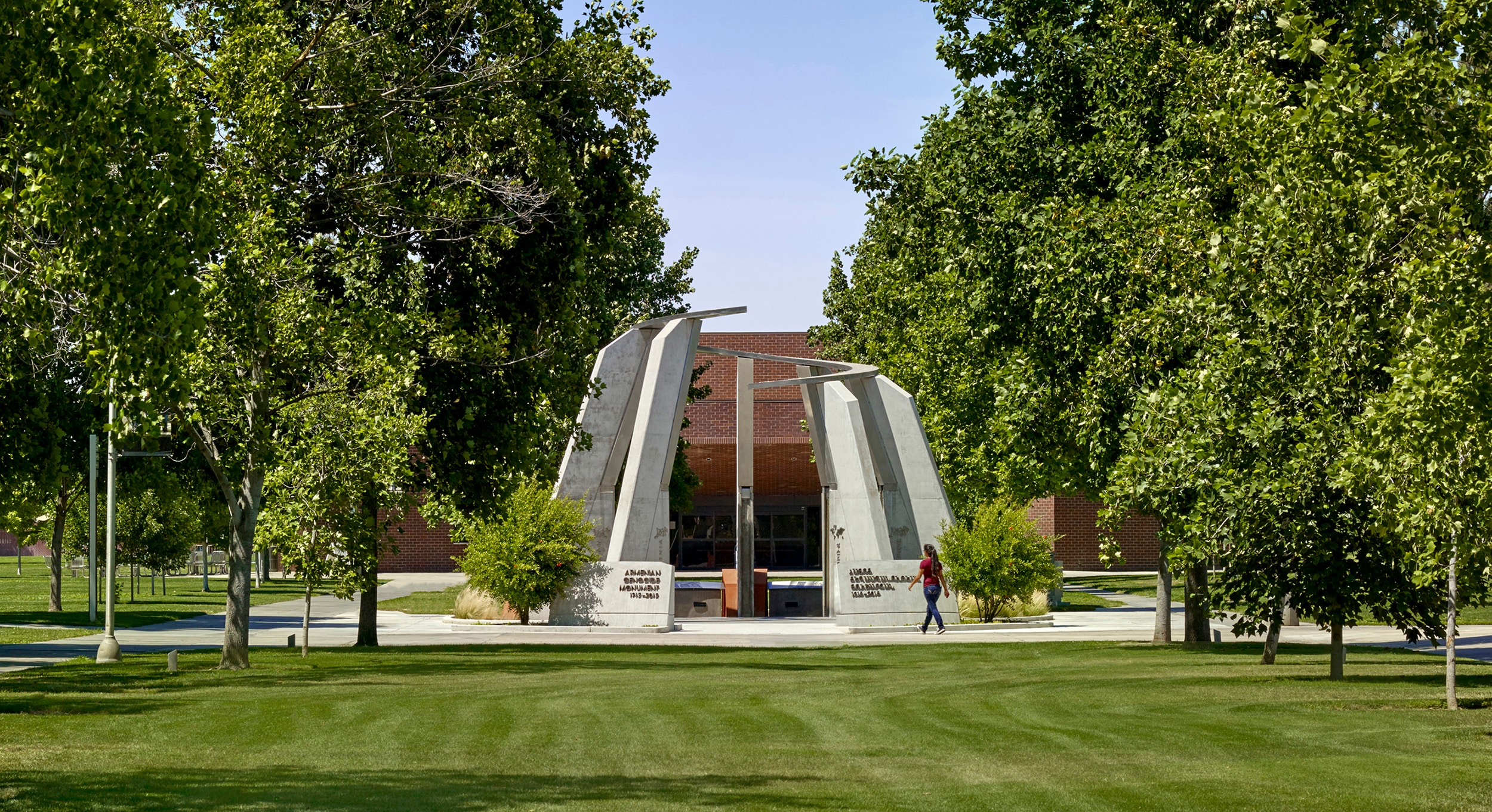
Location
Fresno
Sq. Ft.
3,599
Year Completed
2015
Construction Partner
Fortune Ratliff Construction
April 24, 2015 marked the centennial of the Armenian Genocide. In this, the first genocide of the modern era, 1.5 million human beings were systematically massacred, not because of what they had done but because of who they were. Fresno’s Armenian community sought to mark that tragic day with a lasting monument that would challenge contemporary society to address the ongoing global catastrophe of genocide. The monument acts on several levels: spatially, materially, symbolically, and educationally. It is a place, not an object, an embracing form that encourages gathering, conversation, and reflection. Recognizing this topic as an extension of its academic mission, Fresno State University offered a prominent campus site for the monument.
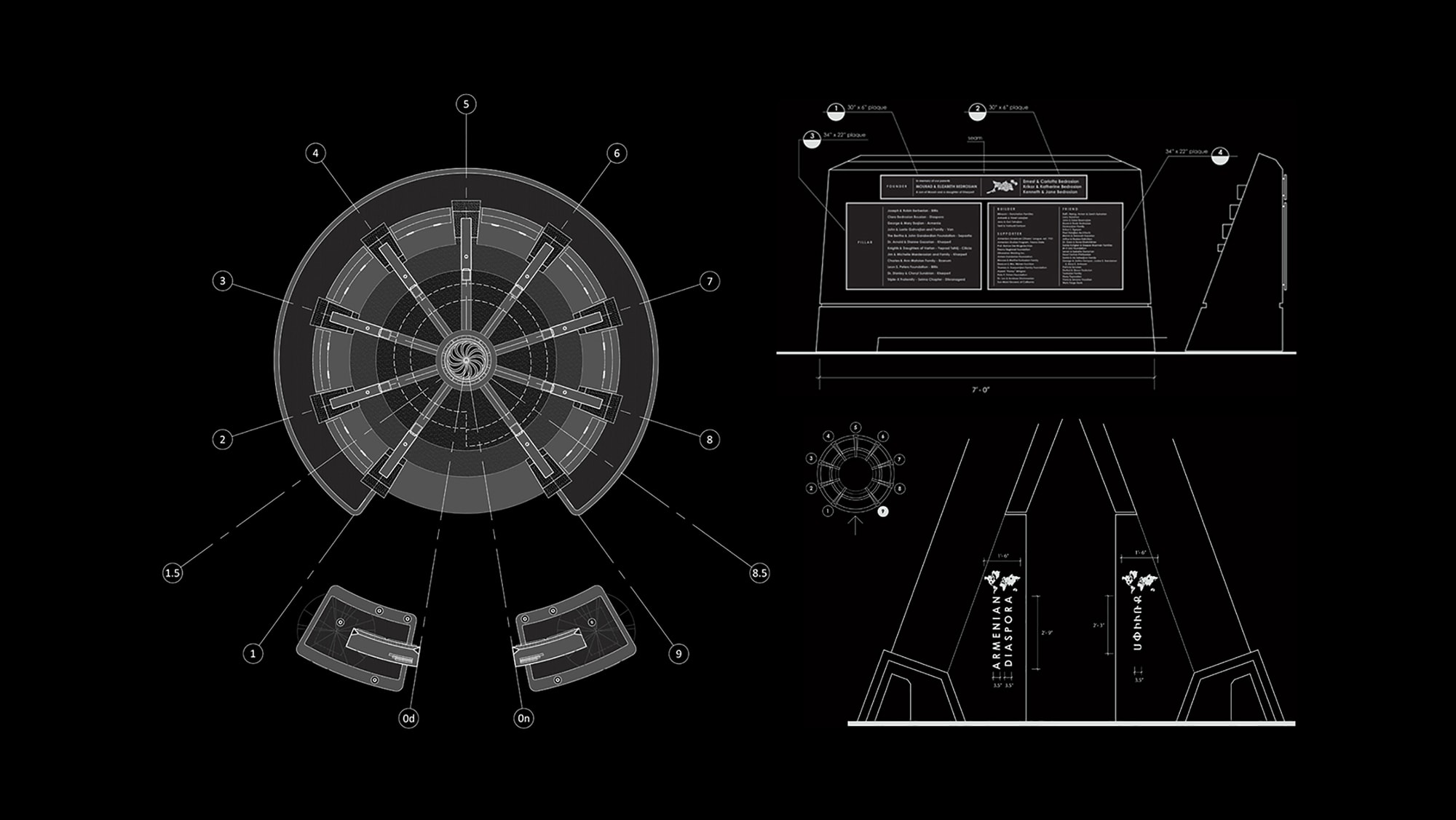
Nine concrete pillars rise from bases of tufa, an indigenous Armenian stone, traditionally used to adorn churches. The pillars framing the entrance are 19 and 15 feet tall—hidden symbolism that permanently recalls the year 1915. On the sides of each pillar are abstracted maps which depict the regions where genocide occurred. Between the pillars, etched stainless steel panels present milestones in the history of the Armenian people, culminating in a panel on 20th century genocides around the globe.

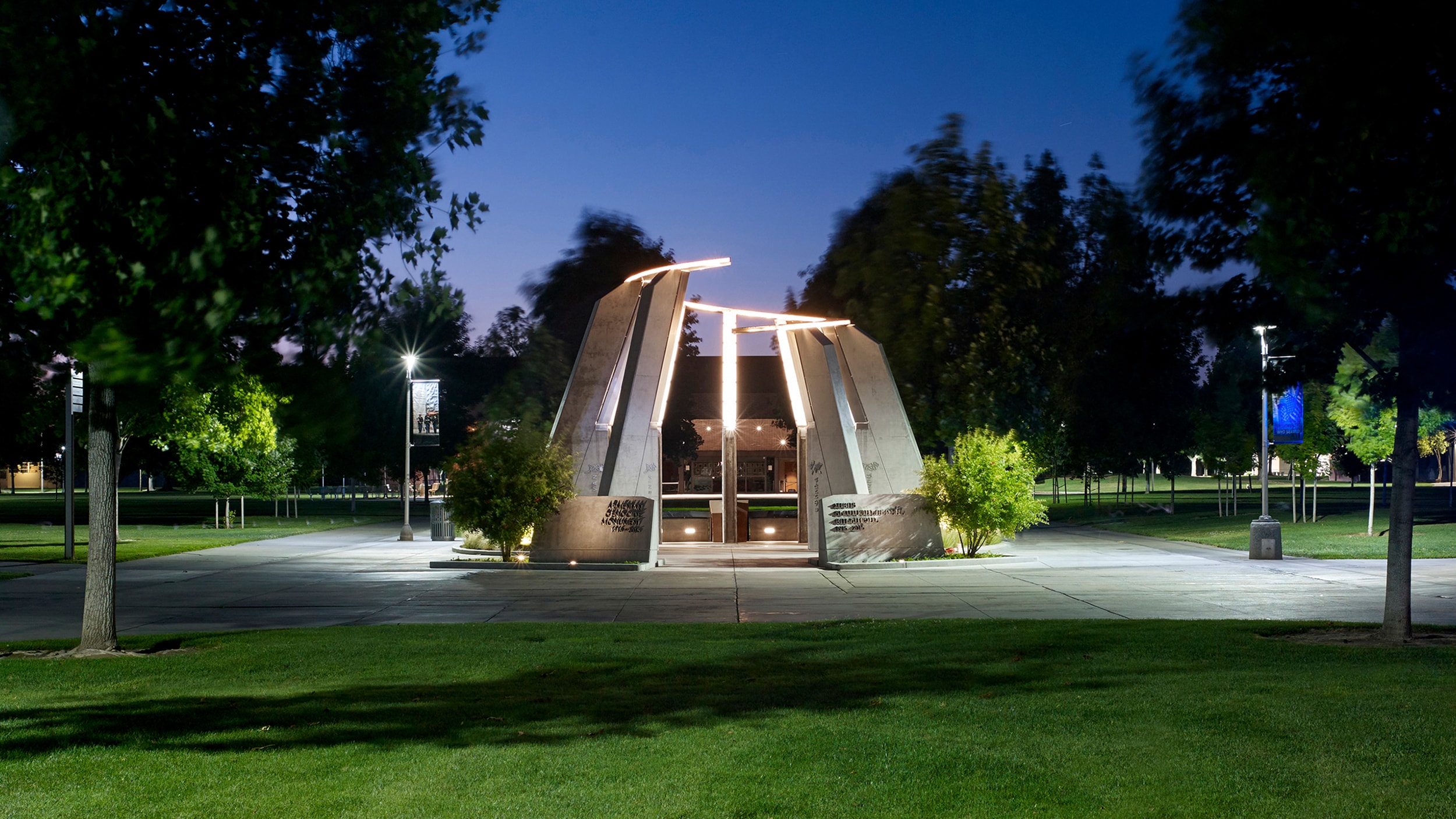
An internally lit, semi-helical, perforated stainless steel halo—an abstraction of the human genome—crowns the space. It’s broken continuity at the entrance, serves as a reminder of the fracture that genocidal acts visit upon humanity. Ribbons of light descend from the halo—from them, water flows down the face of each pillar, disappearing into the earth. At the center of the space, a cast bronze medallion depicts the eternal flame, a recurring symbol in Armenian religious architecture.
Armenian Genocide
Monument
